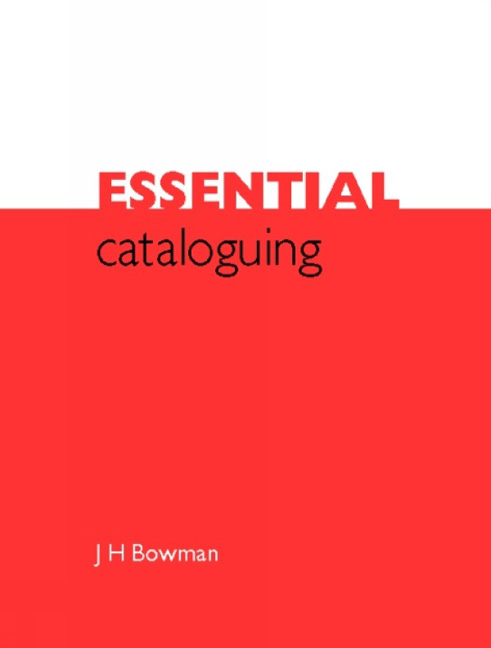Book contents
- Frontmatter
- Contents
- Note to this impression
- Acknowledgements
- 1 Introduction
- 2 Background to cataloguing and AACR2
- 3 Structure of AACR2 and of the MARC 21 format
- 4 Description
- 5 Access points
- 6 Multipart works
- 7 Headings for persons
- 8 Headings for corporate bodies
- 9 Authority control
- 10 Uniform titles
- Bibliography
- Appendix: Catalogue records in MARC 21 format for the examples in this book
- Index
- Frontmatter
- Contents
- Note to this impression
- Acknowledgements
- 1 Introduction
- 2 Background to cataloguing and AACR2
- 3 Structure of AACR2 and of the MARC 21 format
- 4 Description
- 5 Access points
- 6 Multipart works
- 7 Headings for persons
- 8 Headings for corporate bodies
- 9 Authority control
- 10 Uniform titles
- Bibliography
- Appendix: Catalogue records in MARC 21 format for the examples in this book
- Index
Summary
The aim of this book
If you are looking at this book it may be because you are interested in cataloguing. If you are not, I hope that by reading it you will find that cataloguing is not as bad as you thought.
The book is written with three main kinds of reader in mind:
• library school students
• beginning cataloguers
• other information professionals who have forgotten all they ever knew about cataloguing but now find that they have to do it.
If you fall into one of these categories, I hope that you will find something useful in this book, as I take you through the various processes which are involved in cataloguing using AACR2. I must emphasize at the outset that
• it is not intended as a substitute for AACR2; indeed I assume throughout that you have a copy of AACR2 with you while you read it
• it does not purport to cover everything in AACR2. I have tried to give you the basics, but without completely eliminating some of the difficult decision-making which makes up much of cataloguing
• it is intended to be essentially practical. This means that although there is some background material it does not amount to much, and you should refer to other books such as Oddy (1996) and Piggott (1988) for further background information.
Layout
To make it easier for you to stick to the essentials, two sizes of type are used.
The most important parts are set like this.
The less important parts are set like this.
Non-book materials
You will probably think that this book concentrates rather too much on books. Perhaps it does, but it is much easier to reproduce the relevant parts of books. Moreover, when it comes to cataloguing, most libraries are still dealing largely with books.
I believe that if you understand the principles of cataloguing you should be able to transfer them to all kinds of material without too much difficulty. I have included references to some of the nonbook materials which libraries are most likely to encounter, and they are shown like this.
- Type
- Chapter
- Information
- Essential Cataloguing , pp. 1 - 3Publisher: FacetPrint publication year: 2003



